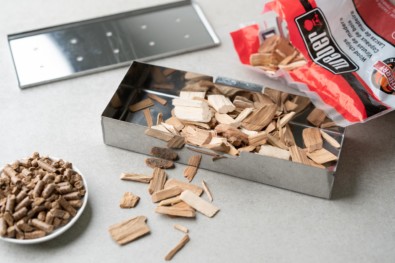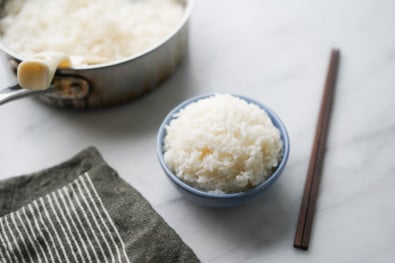Fresh slightly briny and sweet oysters on an ice-chilled tray paired with tangy and bright mignonette sauce, lemon wedges, and maybe some hot sauce–um yes please. Learn how to safely shuck your own oysters at home, but be careful you may never want to stop eating them!
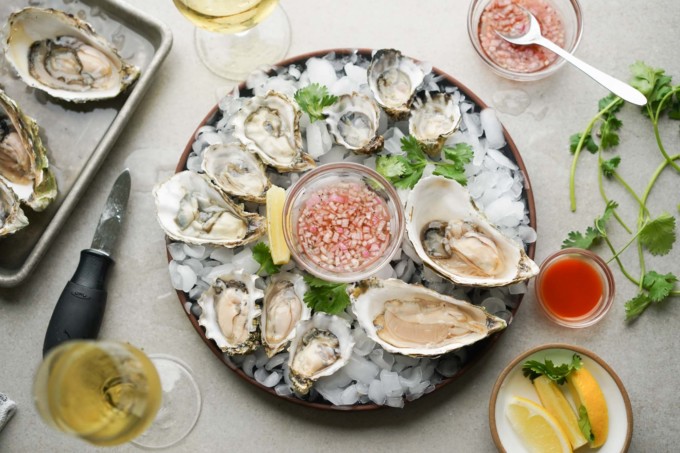
Background/ types of oysters
Oysters are a type of bivalves (like clams, mussels, and scallops) that filter water through their shells and gills. Most types of oysters have two sides of shells, one that is bulbous and cupped and another side that is flattened.
Most of the oysters harvested these days are from farmed oysters. While you might have some reservations about farmed seafood, farmed oysters are the exception. They actually filter out a lot of water (about 50 gallons per day for large oyster varieties) and have helped in removing excess amounts of algae in the water.
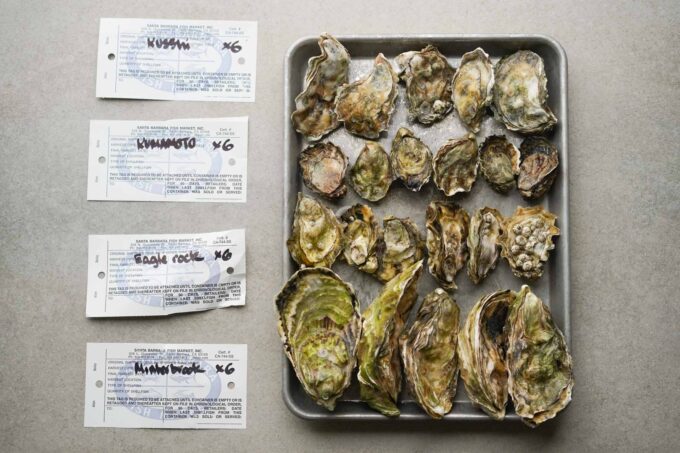
They don’t make a negative impact on their environments and farmed oysters are actually a recommended seafood variety that is suggested by Seafood Watch as sustainable. Some of my favorite types of oysters to eat raw on the half shell are:
- Kumamoto: a smaller sized oyster (about 2-2.5 inches) with a briny start and a sweet finish. These are from the Pacific Coast.
- Minterbrook: These medium sized oysters have a very mild, but sweet flavor. I would recommend these for newbies. They’re from the Puget Sound area.
- Hama Hama: These 3 inch oysters have a salty, but slightly fruity flavor to them and are also from the Puget Sound.
- Blue Point: These East Coast oysters are more typical of what you imagine oysters on TV. They’re larger sized and also have a briny flavor and juicy consistency.
Can you serve oysters at home?
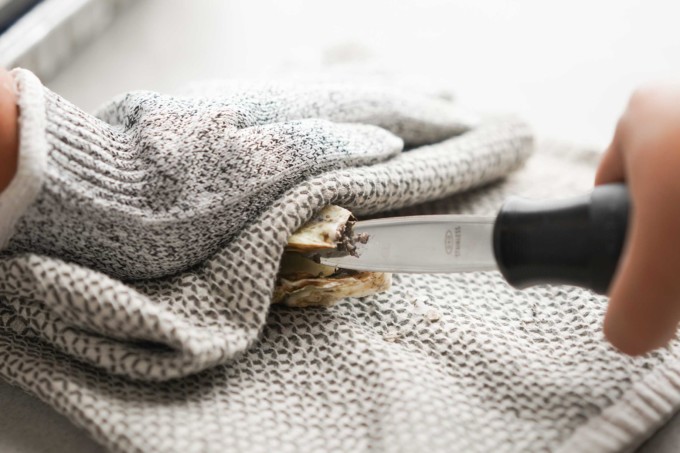
Yes, absolutely. I like to buy oysters from a fresh seafood company, shuck them at home, and eat a dozen or so on a good day. Sometimes you can find oysters in bulk at your local seafood grocer cheaper than what you can find at a restaurant. If you’ve ever wondered if you could serve oysters at home, this is your sign to find your favorite variety and learn how to shuck oysters!
The best way to eat oysters (in my opinion!)
Many people have a lot of opinions on eating how to eat oysters, but I thoroughly believe it’s what you like that matters. My favorite way of eating oysters is raw on the half shell with a little lemon juice, a splash of mignonette sauce, and a drop or two of hot sauce. I try not to add too much of one thing and just settle for a few drops of all three here and there so I can still taste the oyster’s natural flavor.
How/where to buy oysters?
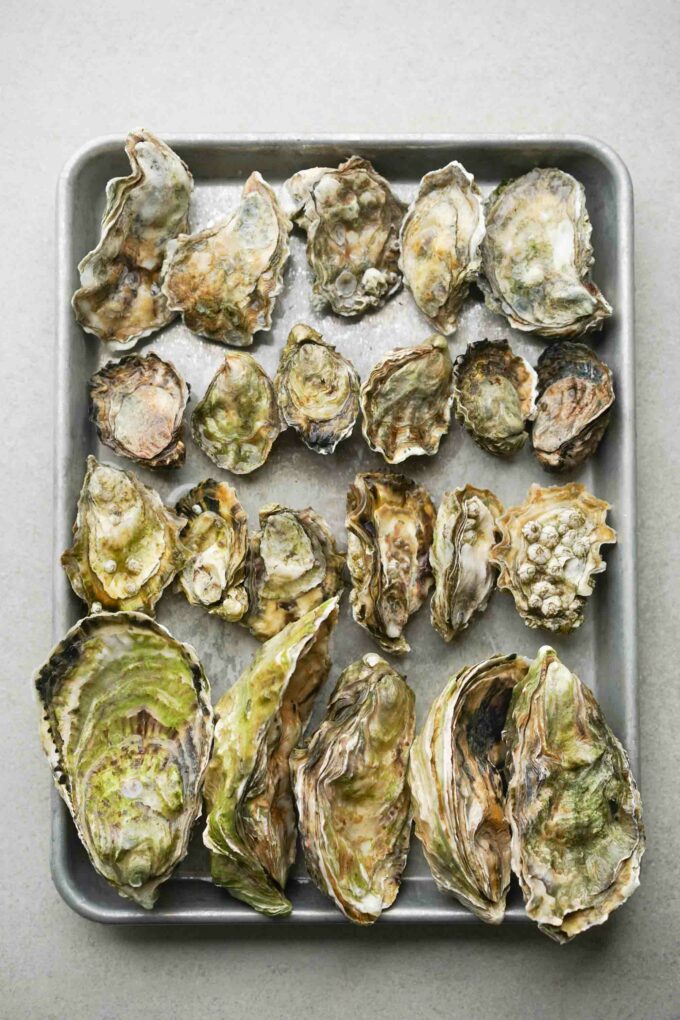
If you’ve never purchased oysters before, here are a few quick tips to follow:
- Eating oysters based on seasons isn’t a hard and fast rule these days, but some do state that due to the spawning season in the warmer months this can affect taste. However, as for risks of eating oysters throughout the year, the invention of refrigerators has given us the availability to eat oysters year round. Many oysters are farmed and refrigerated/frozen until served. Farmed oysters are actually preferred for their positive environmental effects in the water.
- Try to buy oysters from a company that specializes in seafood or is reputable for seafood, like Hog Island Oyster Co., Santa Monica Seafood, or Santa Barbara Fish Market.
- Take a whiff and see. Oysters should smell like the sea, like sea salt and not have a super strong smell. They should have tight shells that are clamped shut. Any oyster with open shells are bad and should not be eaten.
I recently ordered fresh oysters from Santa Barbara Fish Market and was pleasantly surprised by how easy and fast these oysters got to me. You can choose which oysters you want to order and the amount of each oyster to order.
If you’re wondering about how much oysters cost, Santa Barbara Fish Market sells them individually. Each oyster ranges from about $1.75 to $2.65 per oyster. Shipping is also fairly affordable to starting at $12.99, which is hard to beat! Sometimes you can find daily deals from local fishermen or seafood companies where they sell a bucket of oysters for a cheaper price but the varieties range and you may not be able to choose the variety you like.
How to store oysters to keep them fresh
You want to make sure your oysters are chilled and kept cold until it’s time for serving. When you first bring oysters home, make sure to keep them chilled until it’s time for shucking and serving.
I like to take a cooler (with the plug open) and add a layer of ice on the bottom and lay an old towel over the ice. Then I place the oysters in a single layer on top of the cold towel. The unplugged drain will help the oyster from being submerged in the melting ice.
Some people also like to put them in the fridge, but I usually keep them in the same container I bring them home in since I eat them the same day. The number one important thing is to not keep them submerged in any freshwater or water in general because they’re from saltwater areas–being submerged in freshwater can kill them.
Read my post to find out some tips and tricks on how to prepare and shuck oysters at home.
What to serve with raw oysters
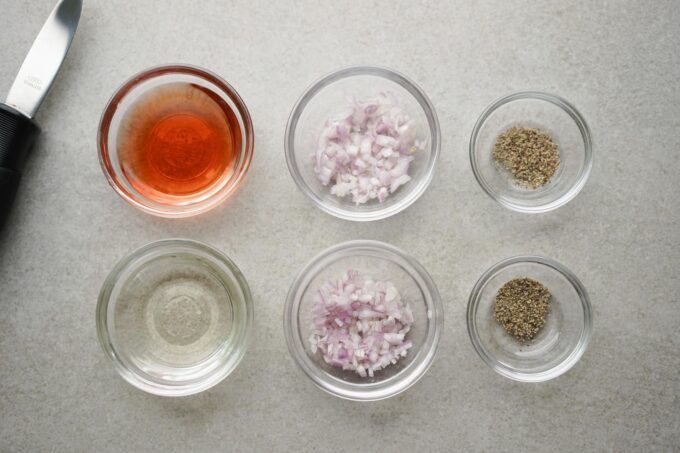
There is a myriad of ways to serve with raw oysters and some popular and classic sides are mignonette sauce (a French sauce made with red wine vinegar, minced shallots, and cracked black pepper), lemon wedges, and hot sauce like Tabasco. One of my favorite experiences of eating oysters was at Husk in Savannah where they used a spritzer filled with liquified mignonette sauce. For this post, we stayed with the tried and true classic mignonette.
How do you plate raw oysters?
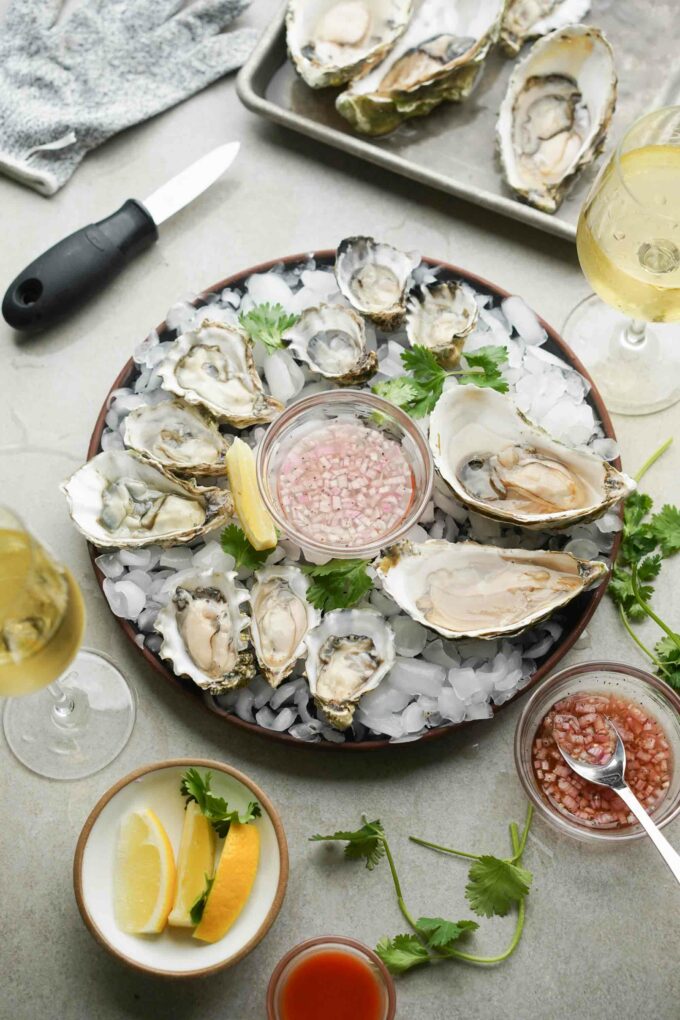
You can plate raw oysters on a tray, sheet pan, or even a cake pan and line it with crushed ice. Some restaurants like to use coarse salt to sit the oysters on, but I prefer extra cold oysters. Line the oysters on top of the ice and add the sides of mignonette sauce and wedges in the center.
Whenever I eat fresh oysters at home, I love to pair them with other seafood dishes so I can have a full on feast. Some of my favorite seafood dishes to serve with oysters are Dungeness crab, Viet style grilled clams or grilled whole fish.
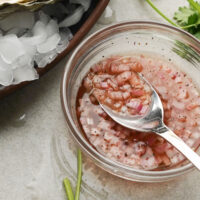
Mignonette Recipe
Ingredients
- 1 tbsp shallots minced
- 2 tbsp red wine vinegar
- ⅛ tsp black pepper cracked
Equipment Used
- knife and cutting board
- small serving bowl





